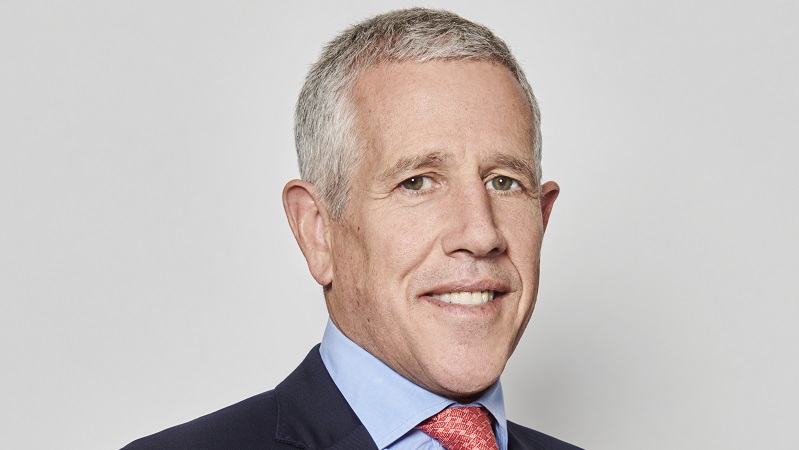While the IPO market in investment trusts has certainly been quiet, with no new launches in 2022 and only two (one a relatively ‘soft’ launch) so far in the first half of 2023, investment trust boards have been busy in other ways, with several proposing or agreeing mergers, reconstructions or liquidations.
What many of these trusts have in common is small size, often coupled with lacklustre performance and wide discounts to NAV. Last week the research team at Winterflood Investment Trusts published a thought-provoking analysis of the trend (Small trusts, big dilemmas), looking at the reasons for the recent developments and putting forward a list of ‘sub-scale’ trusts where they believe similar action could be on the cards.
They argue that while a wind-up may be the last option for boards once other strategic initiatives have been explored, many attempts to attract new shareholders, improve performance and narrow discounts have so far yielded limited results.
Winterflood’s list is shown in the table, along with size, performance and discount data at 30 May 2023. The broker stresses that it makes no judgement on these funds, noting only that they “could be sub-scale and… corporate action may be aligned with shareholder interest”. In particular, it points out that funds investing in micro-cap companies may be deliberately small in order to retain investment flexibility, so the sub-scale label is not necessarily appropriate in these cases.
The idea of a ‘sub-scale’ fund is closely associated with the increased consolidation among wealth managers that make up a significant portion of the investment trust shareholder base, with fewer, larger players needing to ensure that they can take meaningful positions in their trust portfolios while avoiding owning too large a share of a particular trust.
Winterflood’s 2023 industry survey showed that c.70% of wealth managers would now not consider investing in a sub-£100m investment trust, compared with c.70% that would have considered it a decade ago.
However, we would argue that there are exceptions to every rule, and that at least some of the funds in Winterflood’s list deserve some special consideration. Furthermore, not every buyer of investment trusts is a large nationwide wealth manager, so size concerns are not necessarily applicable across the board. Below we consider a handful of funds on the list (again, with no indication that these are the only ones with merit) that could be worth a second look.
Last man standing
One of the trusts that has recently announced liquidation plans is Aberdeen Latin American Income, a small fund blending investment in Latin American equities and government bonds. This will leave only one investment trust (BlackRock Latin American) in the sector.
Latin America is notable as an area where swings in sentiment have seen funds come and go over the years, and history has shown that the point at which the investment options dry up is often, with hindsight, the best moment to have put a toe in the water.
Baring Emerging EMEA Opportunities is the last closed-ended option remaining for investors seeking exposure to emerging Europe, the Middle East and Africa, since the merger of BlackRock Emerging Europe with BlackRock Frontiers in 2018. (JPMorgan Emerging EMEA, nominally a peer, was formerly known as JPMorgan Russian Securities and currently holds almost all its portfolio in cash given the prohibition on trading in Russian stocks since the invasion of Ukraine.)
While we make no predictions on the outlook for the region, we would note that it includes many ‘frontier’ areas (see PA analysis, 26 April) with large economies but relatively underdeveloped capital markets, that could be an interesting addition to a diversified portfolio.
Too early to judge?
While the Winterflood note does discuss what boards can try before going for the nuclear option, it seems only fair to allow a little time for the effect of major changes to work through. In the case of Aberdeen Japan IT, which has proposed a merger with Nippon Active Value Fund, the 10 years since it began focusing purely on Japan (it was previously the Aberdeen All Asia investment trust) would certainly seem a sufficient period over which to conclude that another change might be warranted.
However, Keystone Positive Change IT (previously just Keystone IT) has only been under the Baillie Gifford umbrella since February 2021, which also marked its change from a value-focused UK equity portfolio to a global fund “investing in the equities of companies whose products or services make a positive social or environmental impact”.
At the time it won the mandate, Baillie Gifford’s high-growth investment approach was very much in vogue; the fact that it has fallen out of favour in the past couple of years should not in itself be enough to justify throwing in the towel.
Similarly, Premier Miton Global Renewables (PMGR) has transformed from an energy and utilities portfolio to one focused on energy transition since early 2020. Its tiny market cap of £25.9m is a quirk of its structure; including the structural gearing from its zero-dividend preference shares, its investable resources are over £40m.
As one of only two trusts in the Infrastructure Securities sector, it is differentiated from its much larger peer, the £238m equity-focused Ecofin Global Utilities & Infrastructure Trust, by its blend of direct equity investment and substantial (c 40%) exposure to high-yielding renewables funds.
Although the AIC Renewable Energy Infrastructure sector (home to many of PMGR’s holdings) has de-rated amid higher power prices in the past two years, the trusts operating in this area remain important players in the shift towards net zero, and PMGR offers a way for investors to access a diverse portfolio while limiting fund-specific risks.
Unique or differentiated strategies
UK mid-caps (see PA analysis, 4 May) were practically the only game in town for investors seeking outperformance from UK equities between the turn of the millennium and the Brexit referendum in 2016.
While they have generally underperformed large-caps in more recent periods, options for investors in an area that could return to winning ways remain severely limited in the closed-end space, with only Schroder UK Mid Cap alongside JPMorgan Mid Cap (JPMorgan stablemate Mercantile invests in both small and mid-caps).
Although JP Morgan Asset Management – as noted by Winterflood – has been among the more active in terms of merging or liquidating sub-scale funds, we would argue that with so little choice available for investors seeking mid-cap exposure, the case for pulling the plug on this fund is far from clear.
| Winterflood’s sub-scale investment trust list | AIC sector | Market cap £m | 1y NAV TR % | Sector average | 1y price TR % | Sector average | Discount to NAV % | Sector average |
| Equities | ||||||||
| Atlantis Japan Growth | Japanese Smaller Companies | 66.1 | -2.9 | 4.0 | -5.3 | 2.6 | -16.7 | -7.9 |
| Baring Emerging EMEA Opportunities | Global Emerging Markets | 57.7 | -7.6 | 1.1 | -7.4 | 0.2 | -19.4 | -10.8 |
| BlackRock Income & Growth | UK Equity Income | 40.0 | 3.2 | 2.0 | 10.9 | 2.4 | -8.3 | -2.7 |
| Downing Strategic Micro-Cap | UK Smaller Companies | 32.0 | -9.6 | -8.6 | 0.5 | -6.6 | -13.5 | -11.8 |
| JPMorgan Mid Cap | UK All Companies | 192.7 | -6.3 | -0.6 | -7.3 | -0.4 | -13.9 | -12.2 |
| Jupiter Green Investment Trust | Environmental | 44.4 | 1.8 | -1.1 | 1.0 | -2.8 | -15.2 | -6.8 |
| Keystone Positive Change | Global | 129.8 | 10.4 | 0.5 | 0.0 | -5.2 | -16.2 | -12.0 |
| Marwyn Value Investors | UK Smaller Companies | 53.3 | 1.2 | -8.6 | -8.6 | -6.6 | -42.5 | -11.8 |
| R&M UK Micro Cap | UK Smaller Companies | 50.9 | -22.3 | -8.6 | -19.4 | -6.6 | -16.0 | -11.8 |
| Alternatives | ||||||||
| Triple Point Energy Transition | Renewable Energy Infrastructure | 65.0 | 9.8 | 13.4 | -24.7 | 3.3 | -34.3 | -10.1 |
| Premier Miton Global Renewables | Infrastructure Securities | 25.9* | -18.5 | -11.8 | -22.3 | -14.1 | -14.4 | -7.2 |
| Ecofin US Renewables Infrastructure | Renewable Energy Infrastructure | 100.1 | 2.0 | 13.4 | -25.1 | 3.3 | -22.4 | -10.1 |
| LMS Capital | Private Equity | 19.6 | -6.8 | 19.8 | -24.9 | 30.9 | -57.2 | -33.5 |
| Ceiba Investments | Property: Rest of World | 49.6 | -3.1 | -13.9 | -32.1 | -26.4 | -58.0 | -54.7 |
| *Plus £15.4m of ZDPs | ||||||||
| Source: Winterflood Investment Trusts (list)/AIC/Morningstar (data), at 30/5/23 | ||||||||










